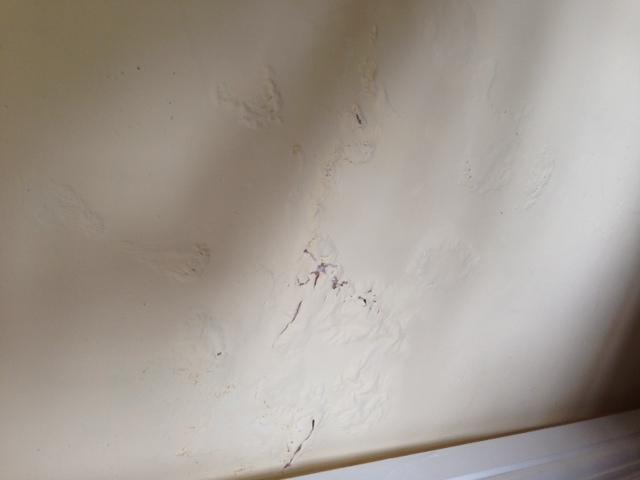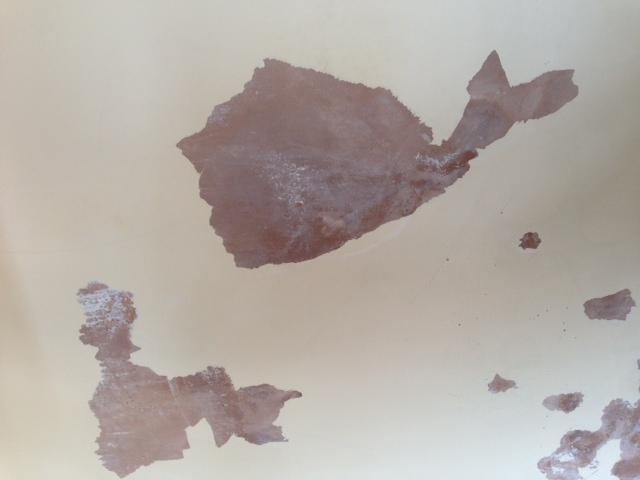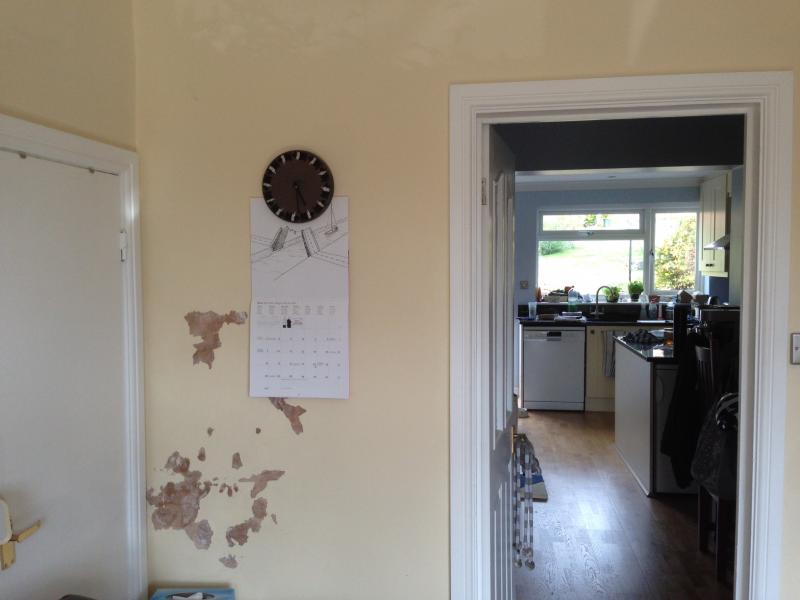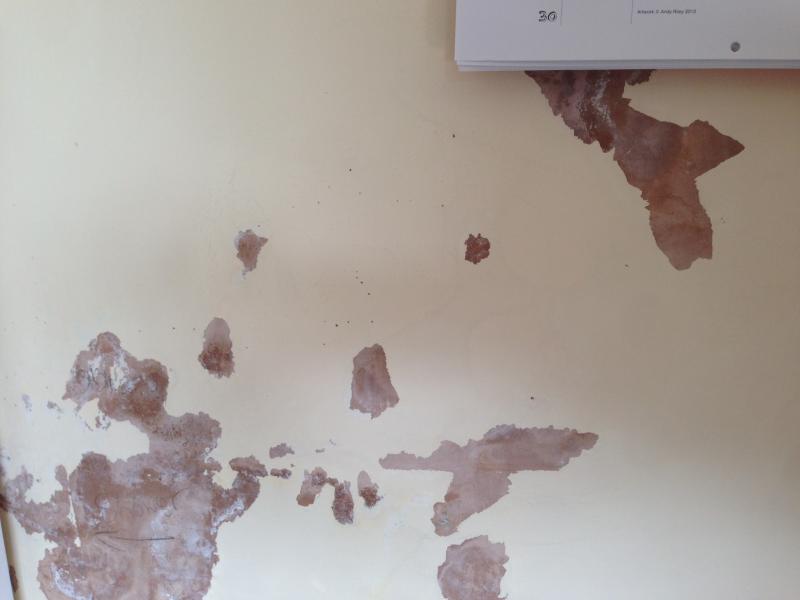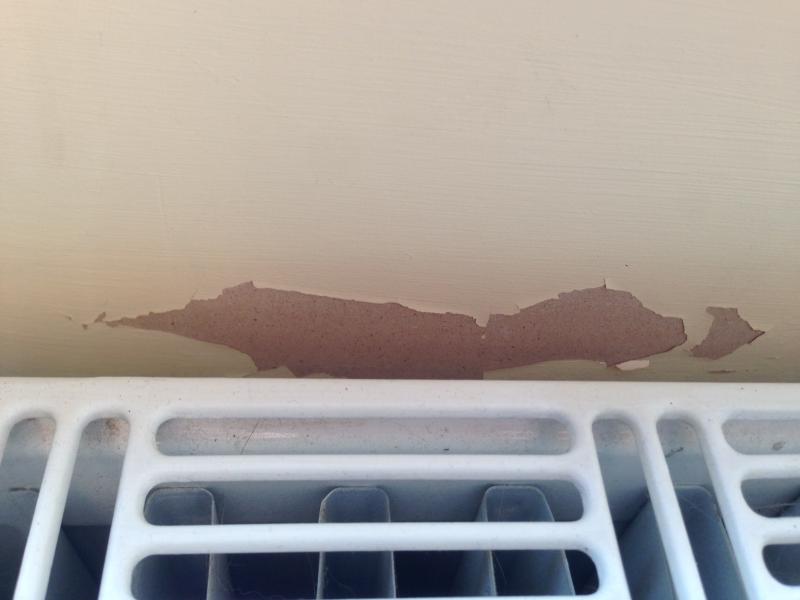Hi,
I'm not sure if I am posting this in the right section, so I am sorry if I am wrong!
The paint on my living room wall is all bubbly and coming off the walls. In some spots underneath the plaster is rough and looks a bit motheaten, some it is really smooth, and some there is a white bloom to it. It also smells a bit like cat wee! I have put some pictures on to show what it looks like
The wall backs onto the bathroom, which is fully tiled and was redone about 6 years ago. The shower used to sit against this wall, and had leaked quite badly, the wall was replastered, and tiled, and now there is a wash hand basin unit and a wall cupboard on that wall.
I am guessing that somehow we have damp penetrating the wall from the bathroom? The bathroom itself seems fine, and the plaster isn't crumbling in the living room. I can't access behind the units in the bathroom but the back of them feels dry.
Is there anything I can paint on over this that would allow the paint to stick and not bubble off? It looks REALLY bad now I have scraped all the loose paint off...
I'm not sure if I am posting this in the right section, so I am sorry if I am wrong!
The paint on my living room wall is all bubbly and coming off the walls. In some spots underneath the plaster is rough and looks a bit motheaten, some it is really smooth, and some there is a white bloom to it. It also smells a bit like cat wee! I have put some pictures on to show what it looks like
The wall backs onto the bathroom, which is fully tiled and was redone about 6 years ago. The shower used to sit against this wall, and had leaked quite badly, the wall was replastered, and tiled, and now there is a wash hand basin unit and a wall cupboard on that wall.
I am guessing that somehow we have damp penetrating the wall from the bathroom? The bathroom itself seems fine, and the plaster isn't crumbling in the living room. I can't access behind the units in the bathroom but the back of them feels dry.
Is there anything I can paint on over this that would allow the paint to stick and not bubble off? It looks REALLY bad now I have scraped all the loose paint off...


